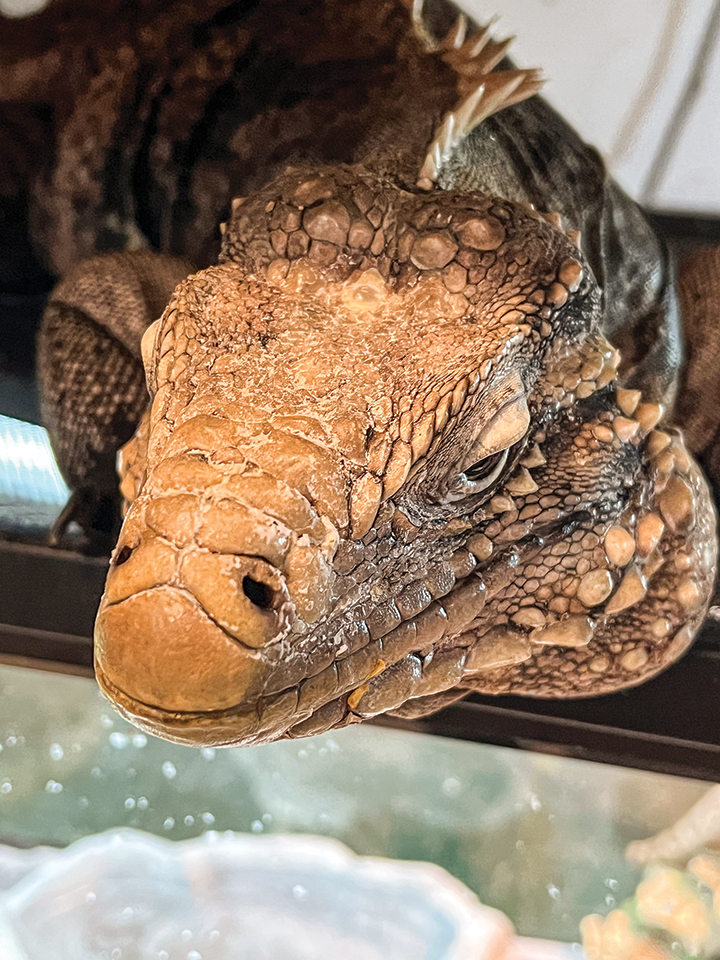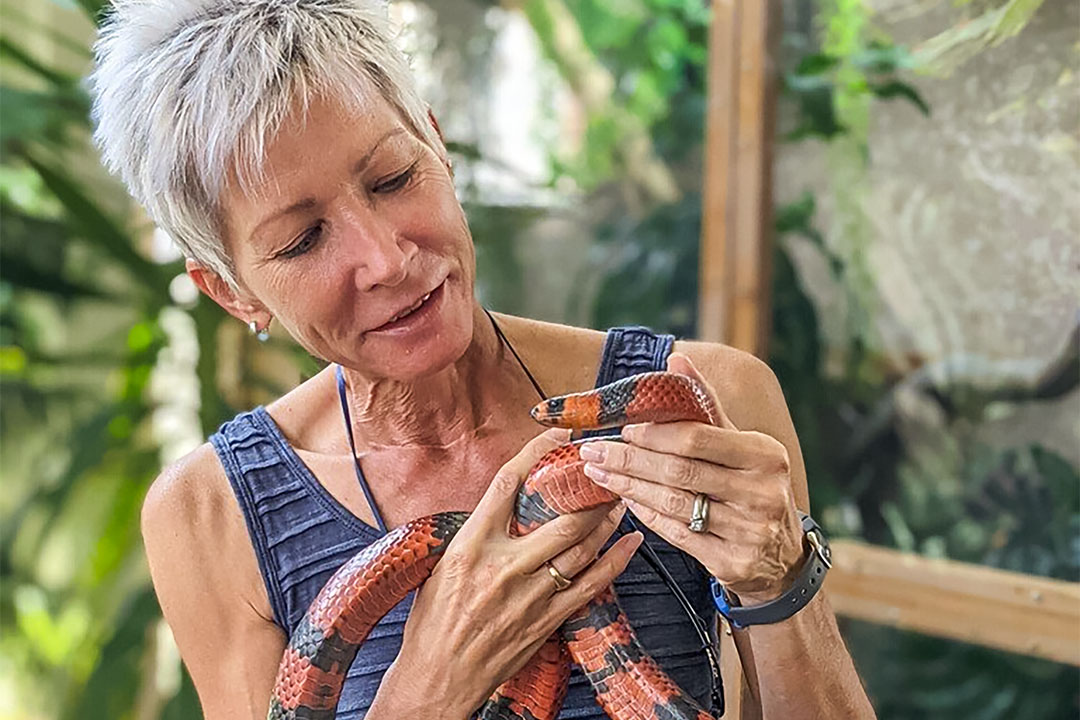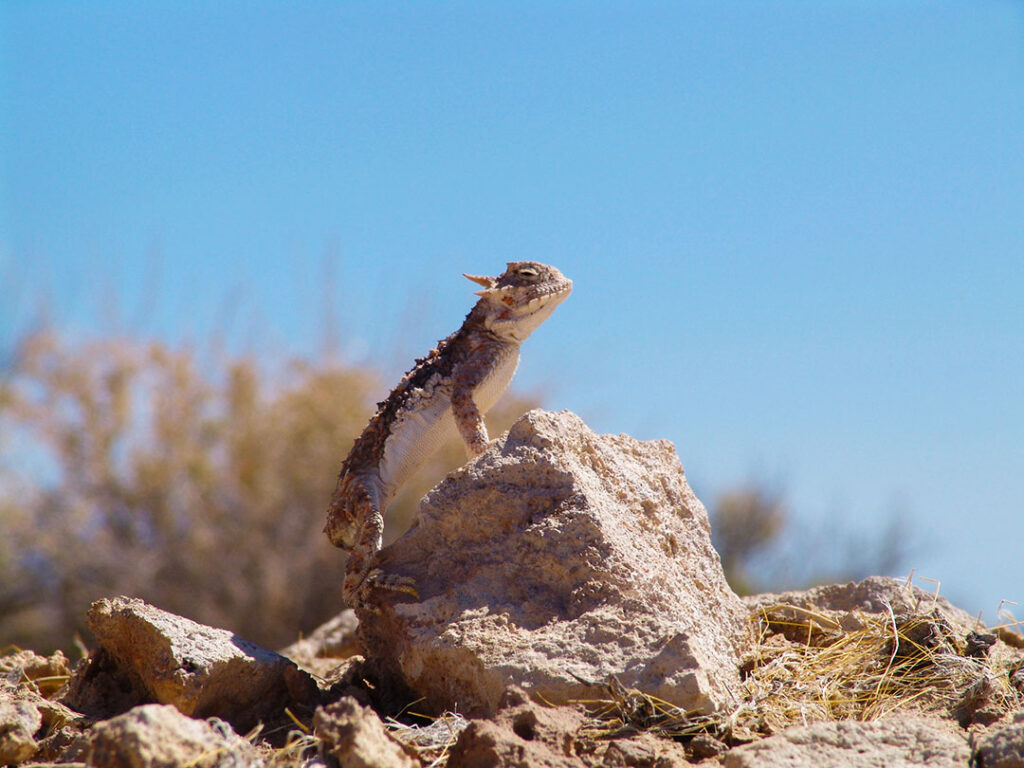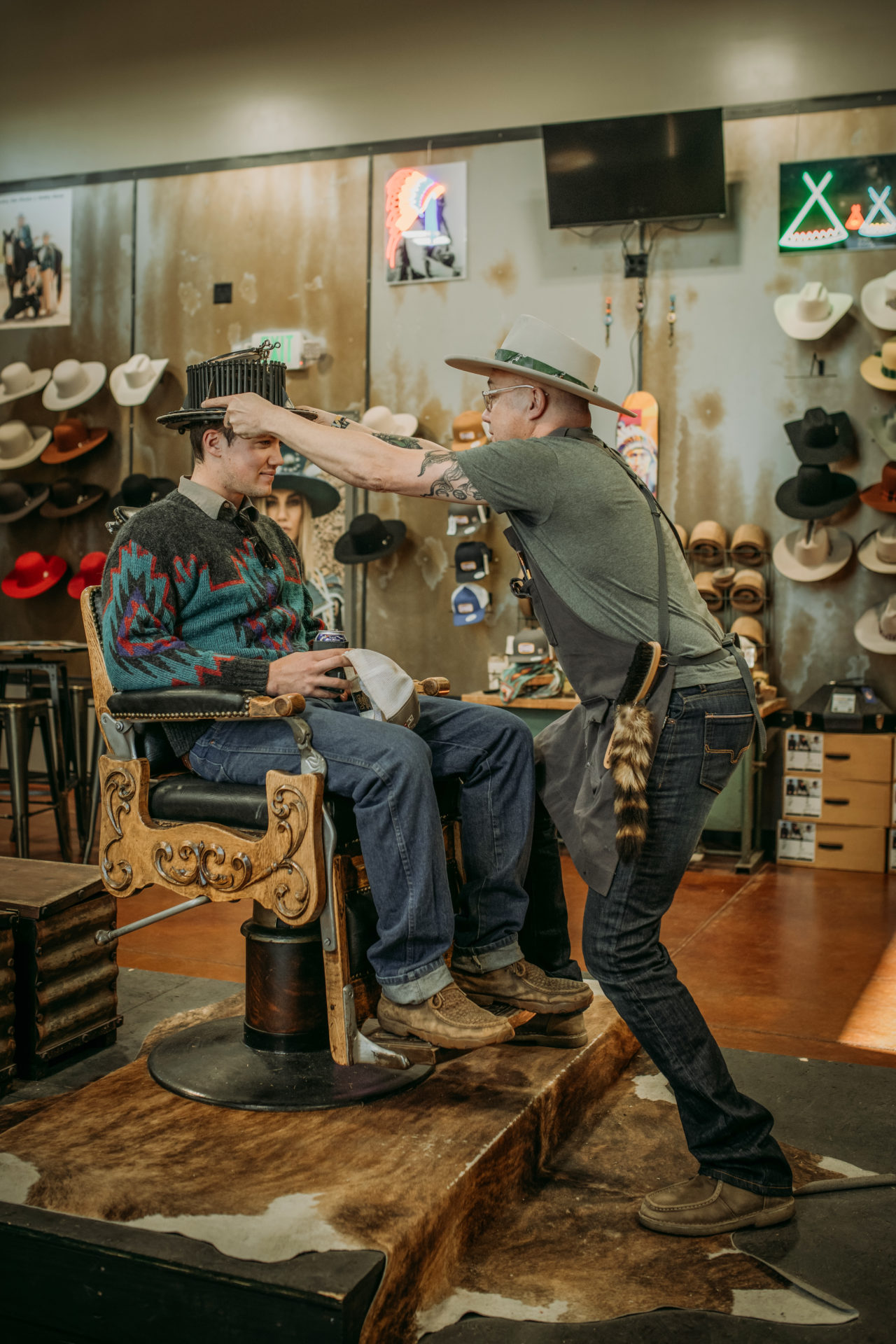Ann-Elizabeth Nash hangs a collage of her dogs on her wall with an obligatory picture of her husband cuddling one of them. It’s the kind of memento displayed by someone who has four dogs (named Siouxsie, Daisy, Pepper and Kip) and tells stories about them to anyone who will listen.
On the top right corner of the collage, nestled in with all her cute fuzzies, there’s a photo of a giant lizard.
That lizard is Gitmo, her pet iguana, who she’s had for a dozen years. She’s also operated the Colorado Reptile Humane Society in rural Longmont out of her home for decades. Gitmo has the run of the house. In a way, so do the 90-plus reptiles she hopes people will adopt—if they’re the right fit.

Gitmo the iguana
A decades-long commitment
People love reptiles and amphibians more than you might think, and that love is many times misguided. Too many translate their love into a desire to keep reptiles as pets when they aren’t ready to take on the huge, strange and long responsibility of keeping them.
Nash gets it. She loves reptiles as much as her dogs. She loves their independence and their colors and their need for space because, Lord knows, she needs it too.
“We are really, really crowded right now,” she says while sighing and, as if to demonstrate, pointing to a dog kennel she uses as a cage for one of her reptiles.
She allows herself Gitmo. She knows she’ll never own another iguana. They can live 40 years. She is 60. Do the math.
Nash tries to be responsible, and she wishes so many others were as well. But she does need people to adopt. Those who can make it past her tough vetting process and well-earned cynicism do, occasionally, prove themselves to her, and then she concedes that owning a reptile or amphibian as a pet can be rewarding.
Her shelter exists because reptiles are difficult. Pet owners who prefer more cuddly animals may not understand reptiles’ independence. They need big cages (larger than a fish aquarium) and special equipment, such as misters or heat lamps. Some have special diets, which can be hard to understand.
Many of these rules also seem to conflict with the fact that you can take a reptile out of the wild and keep it as a pet, the only class of animals where this is true—you can’t keep a deer, for instance—without the need for a special license. If you (or your children) are into catching reptiles, see the sidebar for more details.
Educating the public
Trevor Page began collecting reptiles when he was 5 years old. He is now 47 and had owned 40-some species before he opened Front Range Reptiles in Fort Collins last year.
“I was into things crawling around on the ground,” says Page, who grew up in California, where there were plenty.
Page does birthday parties with his ambassador reptiles and sells supplies as well as animals. He vets his animals by relying on inspections from the U.S. Department of Agriculture as part of his business licensing process. He also talks to potential owners about critters’ needs before he sells them.
“People do have a lot of preconceived notions about what they need,” Page says, and he admits that some of those perceptions are wrong. “But most people are open to learning about it.”
Page also accepts rescues and surrenders, so he has a vested interest in ensuring the animals are cared for. He wants people to come back for supplies, not to return a pet.
Like Page, Chad Peeples has a deep interest in reptiles and got his first lizard, a leopard gecko, seven years ago. He made a lot of mistakes, he says today, as the volunteer coordinator for the Northern Colorado Herpetological Society. Formed in 2015, the society promotes conservation, education and adoption of reptiles and amphibians.
“I have a lot of pets at home now, and it wasn’t until I was looking a little deeper at how many pets are displaced that I wanted to do something about it,” Peeples says.
His initial inexperience is why the organization works hard to educate the public rather than blame them for the tribulations reptiles face. A common problem, echoed by Nash, is the tanks where these pets are kept. They’re almost always too small.
“You get one as a baby, so you think if you just put it in this small tank, it’ll be fine,” he says. “You don’t realize just how much they grow.”
Peeples also believes educating people about local reptiles helps dispel a lot of fears people have of them. The society leads educational hikes through natural areas, where you’re likely to run into a snake or turtle.
“The less people taking shovels to a harmless garter snake, the better,” he says. “We focus on natural areas because it’s where you share the environment and run into them.”
They aren’t for everyone
Nash loves her dogs, and she loves her iguana just as much. She scratches his chin and even coos at him and jokes the way people do about their dogs. She says he’s very tolerant of her, and she means that from a place of love. Gitmo, like all reptiles, is different.
“Dogs are fun to interact with,” she says. “Reptiles have very interesting behavior. I just like to watch them. If you need that affirmation, these won’t do it for you.”
Not everyone shares her sentiments. Reptile surrenders remain high after hitting an all-time low during the pandemic. Nash says reptiles’ expenses and sometimes challenging care can discourage people, and she thinks people wanting more from their reptiles is another reason for giving them up.
“I just wish people really thought of them as loved pets,” she says. “They need to ask, ‘When can I get a bigger place for them? How do I let them out so they can roam a bit sometimes?”
Keeping Wild Reptiles as Pets
Tina Jackson describes Colorado’s state law regarding keeping reptiles and amphibians as the “10-year-old rule” because many kids that age end up catching them. The law allows taking native reptiles or amphibians from the wild and keeping them as pets. You can have up to four wild, native animals of the same species on the list of approved reptiles and up to 12 total.
“This is a very unique thing,” says Jackson, a species conservation coordinator with Colorado Parks and Wildlife. “You can’t take a black bear home and keep it as a pet.”
If you do decide to take a reptile out of the Colorado wild and keep it, you can’t sell it. Owners who return their pets need to return to the same area they were taken from.
You can also possess non-native reptiles or amphibians, but there is a catch: They can’t survive outside in Colorado for long, and they can’t be venomous.
The idea is to prevent anything like the Burmese python disaster in Florida. Many irresponsible pet owners dumped them, and because they thrive in Florida’s climate and don’t have any natural predators in that state, they’ve eaten and overwhelmed many of the state’s protected species.
Jackson calls reptiles “gateway animals” for kids to learn how to appreciate wildlife, and she remembers her own fascination with them as a child. This is why she appreciates the state law allowing people to keep them. But she says they’re still a commitment.
For instance, Jackson adopted a box turtle from a guy who had it for 15 years. She kept it for another 12 before passing it along to a fascinated family.
“Reptiles and amphibians really struggle with our obsession with unique pets,” she says. “It’s a blessing and a curse.”








